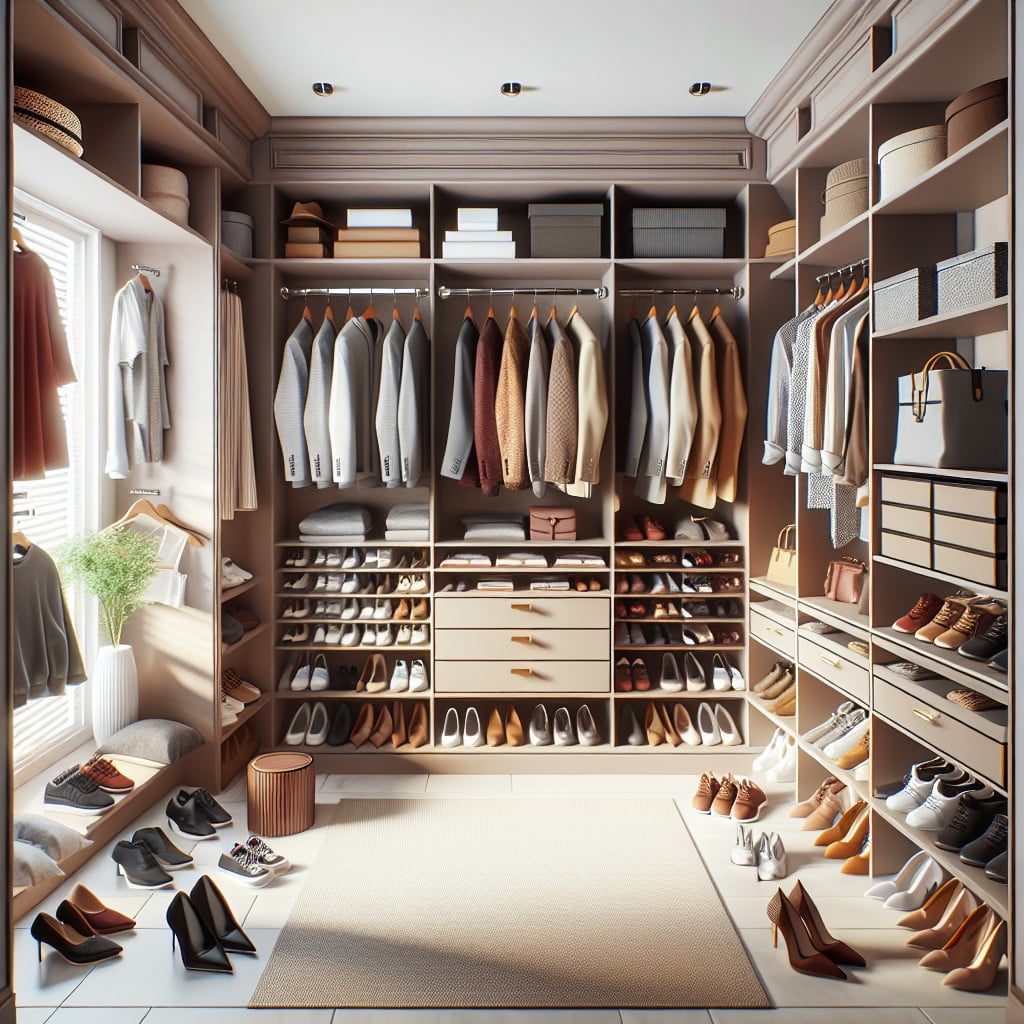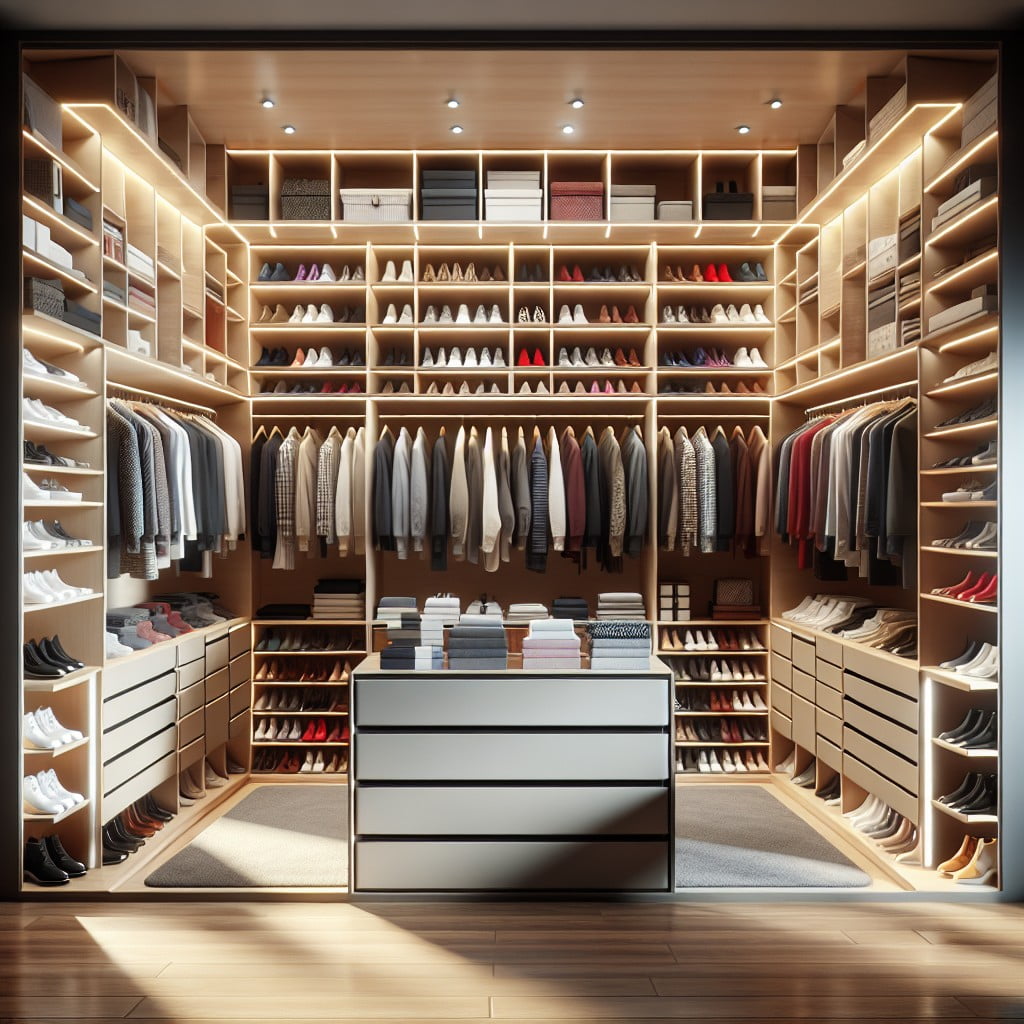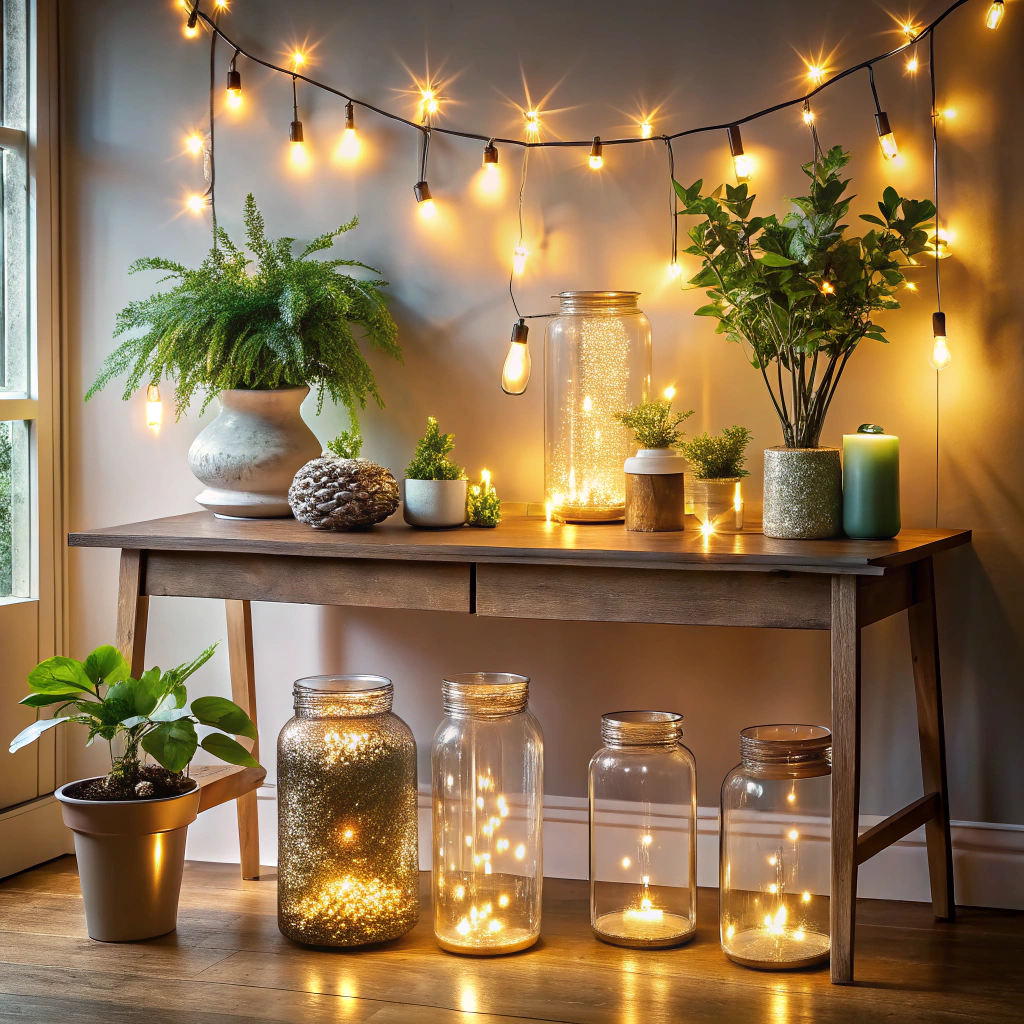Last updated on
Unlocking the mystery of custom closet costs becomes less daunting once we delve into the complexities of closet materials, types and accessories because the money you spend is quite noticeably accounted for in the next few paragraphs.
Embarking on the journey to enhance your living space with a custom closet brings with it the promise of optimized organization and seamless style. When budgeting for this transformative home improvement, expect to invest anywhere from $1,000 to $3,000 on average. But, the devil is in the details: the final tab varies widely, hinging on numerous factors such as the size of your dream closet, the type of closet you envision, the materials you fancy, the intricacies of the design, and even regional labor costs.
Whether you covet the expansive luxury of a walk-in closet or the efficient footprint of a reach-in, material options span from the economical wire systems to the opulence of premium woods. And let’s not forget the skilled hands that will bring your vision to life; their expertise also dictates the price. Dive into the specifics tailored to your curiosities here, where every nuance influencing the cost of custom closets is neatly unpacked.
Key takeaways:
- Custom closets cost between ,000 to ,000 on average.
- Factors affecting cost include size, closet type, material, labor, and location.
- Walk-in closets are luxurious and spacious, while reach-in closets are practical and save space.
- Material choices range from wire systems to premium woods.
- Labor costs vary based on design complexity and installer expertise.
Average Cost of Custom Closets

When budgeting for a custom closet, the expenses can vary widely depending on several elements. On average, homeowners spend between $1,000 to $3,000 for a custom closet solution. However, luxury setups or extensive projects can escalate the cost upwards of $5,000 or more.
It’s important to remember that these figures can fluctuate based on the complexity and customization level of the closet design. Small, simpler designs will sit at the lower end of the price spectrum, while larger or more elaborate arrangements that entail high-end materials and accessories will occupy the higher end.
Keep in mind, these are estimates and actual prices may differ based on local pricing trends and material costs.
Factors in Calculating Custom Closet Cost

Understanding the cost of a custom closet involves examining several elements that contribute to the final price. The size of the closet directly impacts material quantities and labor, with larger spaces typically requiring a higher financial outlay. Additionally, the type of closet—whether a walk-in, reach-in, or built-in—can affect the complexity of the design and thus the cost.
Material choice plays a crucial role, as options range from melamine and wire systems to premium woods and glass, each with different price points. Labor costs vary depending on the scope of work and the expertise of the installer, and they can be influenced by the need for demolition, preparation, or special customization.
Geographic location also influences overall expenses, as market rates for materials and labor can differ significantly from one region to another. It’s important for homeowners to consider these factors when budgeting for their custom closet project.
Closet Size
Visualizing your ideal storage space starts with considering the dimensions of your room. The larger the footprint, the higher the cost, primarily because more materials and time are necessary to construct the closet system.
Small reach-in closets might only necessitate a simple layout with shelves and hanging rods, while expansive walk-in closets could require elaborate designs with islands, benches, and numerous sections for clothing and accessories.
It’s essential to measure accurately to determine how much shelving, drawer, and hanging space will fit. Remember that going vertical can maximize storage without expanding the floor area, potentially offering a budget-friendly solution.
Customization is scalable; from a modest set of drawers and shelves to an extensive suite of luxury fittings, the size of your closet will guide both the complexity and price of the project.
Closet Type
The choice of a reach-in closet is common in smaller rooms, offering a straightforward design with doors that swing out. Typically less costly than walk-ins, reach-in closets are space-efficient but offer less room for customization.
In contrast, walk-in closets are spacious, allowing for a more personalized organization system and often including features like seating or dressing areas. Though they are a luxury feature adding value to a home, they require a larger space and have a higher price tag for not just materials but also installation.
Lastly, built-in wardrobes or armoires are furniture pieces that can offer a semi-custom storage solution. While not built into the walls, they can be designed to fit specific dimensions and styles of a room. They are versatile and can be moved if necessary, usually falling in the middle price range between the two aforementioned closet types.
Closet Material
The choice of material plays a significant role in the overall expense of your custom closet. Options range from wire and coated wire, less expensive and practical, to melamine and laminates, which strike a balance between cost-efficiency and aesthetic appeal.
For a more luxurious touch, solid wood and custom metal finishes can be selected, but these come with a higher price tag. Thermofoil and acrylics offer a sleek, modern look and are midpoint in cost.
It’s essential to consider durability and maintenance alongside the cost when making your selection, as this will impact long-term satisfaction and the closet’s lifespan. Remember, the materials will also dictate the closet’s functionality and how it complements your home’s interior design.
Labor
Professional installation can significantly affect the overall cost of your custom closet project. Expert closet installers typically charge by the hour, with rates varying depending on their experience and your location. Installation costs may also differ based on the complexity of the design and the intricacy of assembly required for specific features like drawers, shelving, and specialty racks.
To receive a more accurate labor estimate, obtain quotes from multiple contractors. Keep in mind that while choosing a less expensive installer can lower costs, it’s essential to consider their track record and craftsmanship quality, as these aspects can influence the durability and finish of your custom closet. Additionally, remember that some companies may include installation as part of a package deal, which can offer savings compared to hiring an independent contractor.
Geographic Location
Where you reside can significantly influence the price tag of your custom closet. High-cost-of-living areas, such as major metropolitan cities, often come with steeper prices for materials and labor. Conversely, in smaller towns or regions with a lower cost of living, you might find more affordable rates.
Additionally, availability of custom closet companies in your area can affect costs. Greater competition typically drives down prices, giving you more budget-friendly options. It’s also worth noting that if you’re in a remote area, contractors may charge extra for travel time or transportation of materials.
Always consider local economic conditions and market rates to better estimate your custom closet investment.
Types of Custom Closets
Diving into the types, walk-in closets are the epitome of luxury—a private room devoted to apparel where space isn’t typically a constraint. Considered a real estate asset, they can be customized with an array of features: from islands to seating areas, the possibilities are extensive.
Reach-in closets are more common and practical, found in many bedrooms and hallways. Their linear layout demands smart design to increase storage vertically and horizontally. These often feature a combination of hanging space, shelves, and drawers. They can maximize functionality with add-ons like double-hang systems, which allocate space efficiently for shorter items.
Built-in closets take customization a step further. Integrated into the room’s architecture, they can conceal storage behind sleek doors or display treasured items. Designed to fit precise dimensions, they seamlessly blend into the room’s aesthetic, often incorporating unique configurations tailored to specific storage needs or design preferences.
Walk-In
Walk-in closets are spacious enough to allow an individual to enter and move around, offering a luxurious and ample storage option for clothing, shoes, and accessories. They often serve as a dressing area and can include a variety of custom features such as:
- Island Units: Central drawers or seating options, providing additional storage and convenience.
- Adjustable Shelving: Enables customization to accommodate different item sizes and seasonal updates.
- Hanging Sections: Varied heights for hanging items, from full-length garments to shirts and pants.
- Lighting: Integrated options like LED strips or chandeliers to enhance visibility and ambiance.
- Accessories: Tie racks, shoe shelves, jewelry drawers, and more to organize specific items.
The investment in a walk-in closet aligns with its size and the complexity of the design, making it a significant factor when considering overall custom closet costs.
Reach-In
Reach-in closets are typically found in bedrooms, hallways, or offices. They require less space than walk-ins and are suitable where saving floor area is a priority.
When considering reach-in closets for your custom design, potential features include:
- Sliding or standard doors to economize physical space.
- Custom shelving and drawer systems that cater to specific storage needs.
- Accessory racks, hooks, and bins to utilize back of door and wall space.
Height can be maximized by stacking storage components, allowing seldom used items to be stored on higher shelves. Opting for adjustable shelves and rods can provide flexibility to adapt to changing storage requirements. Efficient lighting fixtures can be installed to enhance visibility within the closet. The simplicity of these designs often leads to a lower cost compared to more extensive walk-in options.
FAQ
How much does it cost to build a custom closet?
The cost of building a custom closet typically falls within the range of $3,500 to $5,000, determined by the size of the closet and the specific customizations involved.
Are custom closets worth it?
Certainly, custom closets are worth it as they enhance the functionality and aesthetics of your living spaces, adding value to your home and appeal to potential buyers.
Do custom closets increase home value?
Yes, custom closets can increase home value, with homeowners potentially recouping around 56% of their investment, which can add approximately $2,000 to the property’s worth.
Why are closets so expensive?
High-end closets are priced steeply due to components like the cost of labor involved in customizing the closet and the design intricacies involved, which often necessitate sophisticated craftsmanship.
What factors can influence the cost of a custom closet?
The cost of a custom closet can be influenced by factors such as the choice of materials, the complexity of the design, the size of the closet, and the professional fees for design and installation.
How does the cost of a DIY custom closet compare to a professionally installed one?
Typically, a DIY custom closet costs less than a professionally installed one, but the latter often entails added value through expert design and durability.
Can regular maintenance reduce the overall cost of a custom closet over time?
Yes, regular maintenance can indeed reduce the overall cost of a custom closet over time.
Recap:




